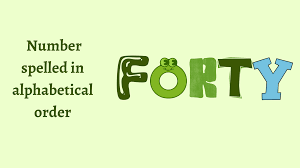What Is Occupation

“What Is Occupation: Everything You Need to Know”
Occupation is a term that touches nearly every aspect of our daily lives, from the work we do to the roles we assume in society. But what is occupation? In this comprehensive guide, we’ll explore the meaning of occupation, its historical evolution, and its significance in shaping our identities, economies, and cultures. Whether you’re a student, a career professional, or simply curious about the concept, this article will provide you with all the insights you need to understand what occupation means and why it matters.
Introduction
Have you ever wondered what defines your job, or how the term “occupation” has evolved over time? Imagine a world without the concept of occupation—where roles were fluid, and the structured work we know today did not exist. In our modern society, occupation is not just a way to earn a living; it’s a key element of personal identity and social structure.
Consider this: According to recent labor statistics, millions of people worldwide identify strongly with their occupations, which influence not only their financial stability but also their social status and even their health. Understanding what is occupation helps us appreciate the diversity of work and the importance of meaningful employment in driving economic growth and personal fulfillment.
In this article, we will cover:
- Definition and Fundamentals: A clear explanation of what occupation is and its core characteristics.
- Historical and Contextual Background: How the concept of occupation has evolved over time, including key milestones and historical anecdotes.
- In-Depth Exploration: A breakdown of various types and categories of occupations, illustrated with real-world examples and case studies.
- Importance and Applications: The significance of occupation in everyday life, society, culture, science, and business.
- Common Misconceptions and FAQs: Clarifications of common myths and answers to frequently asked questions.
- Modern Relevance and Trends: An exploration of current trends, recent research, and debates shaping our understanding of occupation today.
- Conclusion and Call-to-Action: A summary of key points and suggestions for further reading and engagement.
By the end of this guide, you’ll have a thorough understanding of what is occupation, why it is crucial for both individual well-being and societal development, and how it continues to influence our world. Let’s dive in!
What Is Occupation? A Straightforward Definition
Occupation refers to the principal activity or job that a person engages in to earn a living. It encompasses the tasks, responsibilities, and roles that individuals perform within the context of their work. Occupation can also refer to the state of being occupied—being actively engaged in work or any productive activity.
Essential Characteristics of Occupation
When we ask, what is occupation, several key properties come into play:
- Primary Work Activity: It is the main job or profession through which individuals earn their income.
- Role and Function: Occupation defines a person’s role within society, whether they are a teacher, engineer, artist, or any other professional.
- Economic Contribution: It is a key factor in the economy, contributing to the production of goods, services, and overall economic growth.
- Identity and Status: For many, occupation is a significant part of their identity and social status.
- Dynamic and Evolving: Occupations can change over time due to technological advancements, economic shifts, and personal growth.
In summary, what is occupation? It is the work or professional role that individuals perform to contribute to the economy, express their skills and talents, and define their place in society.
Historical and Contextual Background
Understanding what is occupation involves exploring its evolution through history and its contextual significance in various societies.
Early Beginnings and Traditional Roles
Ancient Civilizations
- Agricultural Societies: In ancient times, occupation was closely tied to survival and subsistence. Most people were engaged in farming, hunting, or gathering, and their roles were defined by the needs of the community.
- Craftsmanship and Trade: As societies evolved, specialized occupations emerged, such as blacksmiths, weavers, and traders. These early professions laid the foundation for economic systems based on skill and craftsmanship.
Medieval and Renaissance Eras
- Guilds and Apprenticeships: During the medieval period, occupations became more structured with the formation of guilds. These associations regulated trade practices, maintained quality standards, and provided training through apprenticeships.
- Rise of Commerce: The Renaissance brought about an explosion of trade and commerce, leading to the emergence of occupations related to finance, navigation, and art. This period saw the beginnings of what we might now recognize as professional roles.
Industrialization and the Modern Workforce
The Industrial Revolution
- Transformation of Work: The Industrial Revolution in the 18th and 19th centuries dramatically changed the nature of occupation. The rise of factories and mass production shifted many people from agricultural and artisanal work to industrial labor.
- Urbanization: As industries grew, people migrated to urban areas, leading to the development of new occupational roles in manufacturing, services, and administration.
- Economic Shifts: The focus on efficiency, productivity, and wage labor during industrialization laid the groundwork for modern occupational structures and labor markets.
20th Century to Present
- Rise of the Service Sector: In recent decades, economies have shifted from manufacturing to services, leading to a diverse range of occupations in fields such as healthcare, education, finance, and technology.
- Technological Advancements: The digital revolution has given birth to entirely new occupations in fields like software development, digital marketing, and data analytics, while transforming traditional roles.
- Globalization: The global exchange of goods, services, and information has expanded occupational opportunities and influenced work practices across the world.
Notable Historical Anecdotes
- Guild Systems in Medieval Europe: Guilds not only regulated trades but also played a significant social role, fostering community, protecting workers’ rights, and ensuring quality craftsmanship.
- The Industrial Boom: The rapid urbanization and economic growth during the Industrial Revolution transformed societies, leading to modern labor movements and the establishment of workers’ rights.
- Modern Tech Industry: The emergence of Silicon Valley and the rise of tech giants illustrate how occupations can evolve rapidly with technological change, reshaping economies and creating new forms of work.
In-Depth Exploration: Key Aspects and Categories of Occupation
To fully understand what is occupation, we must explore its various dimensions, including the different types of occupations and how they shape our lives.
1. Types of Occupations
Occupations can be broadly categorized based on the nature of the work, required skills, and economic sectors.
a. Primary Occupations
- Definition: These occupations involve the extraction or harvesting of natural resources.
- Examples: Farming, fishing, mining, forestry.
- Importance: Primary occupations are foundational to economies, particularly in developing countries, as they provide the raw materials for further production.
b. Secondary Occupations
- Definition: These occupations involve the processing, manufacturing, or construction of goods.
- Examples: Factory work, construction, assembly line jobs, manufacturing.
- Impact: Secondary occupations drive industrial growth and technological innovation by transforming raw materials into finished products.
c. Tertiary Occupations
- Definition: These occupations are centered around the provision of services.
- Examples: Healthcare, education, retail, finance, hospitality.
- Significance: The service sector is a major component of modern economies, contributing to high-value job creation and economic diversity.
d. Quaternary and Quinary Occupations
- Definition: These categories involve knowledge-based and decision-making roles, respectively.
- Examples: Research and development, information technology, executive management, policy-making.
- Modern Relevance: As economies become more knowledge-driven, these occupations are increasingly important for innovation and leadership.
2. The Role of Occupation in Society
a. Economic Impact
- Income Generation: Occupations provide the means for individuals to earn a living, contributing to personal financial stability and overall economic growth.
- Economic Development: A diverse range of occupations supports a robust economy by creating jobs, driving innovation, and promoting trade.
b. Social and Cultural Influence
- Identity and Status: Occupations often form a core part of one’s identity, influencing social status, community standing, and personal self-esteem.
- Social Networks: Workplaces are key social environments where individuals build relationships, share knowledge, and form communities.
- Cultural Norms: Different occupations contribute to the cultural fabric of society, influencing norms, values, and even leisure activities.
c. Personal Fulfillment and Growth
- Career Satisfaction: A fulfilling occupation can lead to personal growth, a sense of achievement, and overall life satisfaction.
- Skill Development: Occupations provide opportunities for learning, skill development, and career advancement, contributing to long-term personal development.
3. Real-World Examples and Case Studies
Case Study 1: The Transformation of Manufacturing
- Overview: The shift from traditional manufacturing to high-tech production illustrates the evolution of occupational roles.
- Application: Modern factories incorporate automation, robotics, and digital technology, requiring workers to adapt and acquire new skills.
- Impact: This transformation drives economic growth and productivity while also highlighting the need for continuous education and training.
Case Study 2: The Rise of the Service Sector
- Overview: In many developed economies, the service sector now dominates. Occupations in healthcare, education, finance, and technology have grown significantly.
- Application: The shift towards service-based jobs has redefined career paths and work-life balance, offering new opportunities and challenges.
- Impact: The growth of the service sector contributes to higher wages and improved living standards but also demands new approaches to workforce training and regulation.
Case Study 3: Gig Economy and Freelance Work
- Overview: The digital revolution has given rise to the gig economy, where freelance and short-term contract work has become increasingly common.
- Application: Platforms like Uber, Upwork, and Fiverr enable people to monetize their skills on a flexible basis.
- Impact: While offering flexibility and autonomy, gig economy jobs also raise questions about job security, benefits, and workers’ rights in a rapidly changing labor market.
Importance, Applications, and Benefits of Understanding Occupation
Understanding what is occupation is critical not only for individual career planning but also for grasping broader societal and economic dynamics. Here are some key benefits and applications:
1. Economic and Social Development
- Workforce Planning: Understanding occupational trends helps policymakers and businesses plan for future workforce needs, ensuring sustainable economic growth.
- Income Distribution: Analyzing occupational data can reveal patterns in income distribution and inform policies aimed at reducing economic inequality.
- Innovation and Productivity: A diverse and skilled workforce is essential for driving innovation, enhancing productivity, and fostering competitive industries.
2. Personal and Professional Growth
- Career Decision-Making: Knowing what is occupation and how it is defined can help individuals make informed career choices and pursue paths that align with their interests and skills.
- Skill Development: Occupations provide a platform for continuous learning and professional development, essential for adapting to evolving market demands.
- Work-Life Balance: Understanding the demands and rewards of different occupations can help individuals achieve a healthy balance between their professional and personal lives.
3. Cultural and Societal Impact
- Identity Formation: Occupation plays a significant role in shaping personal and social identity. It influences how individuals see themselves and how they are perceived within society.
- Community Building: Work environments foster social networks and community bonds, contributing to social cohesion and cultural richness.
- Global Perspectives: Occupation helps us understand cultural and economic differences across regions, promoting cross-cultural understanding and international cooperation.
4. Educational and Research Advantages
- STEM and Humanities: The study of occupations is interdisciplinary, bridging fields such as economics, sociology, psychology, and education, enriching our overall understanding of human society.
- Data-Driven Insights: Research into occupational trends provides valuable data for academic studies, informing everything from economic forecasts to social policy design.
Addressing Common Misconceptions and FAQs
Despite its widespread use, several misconceptions about what is occupation persist. Let’s clarify some common misunderstandings:
Misconception 1: Occupation Is Just a Job
- Clarification: While occupation often refers to one’s job, it also encompasses broader professional roles, career paths, and the activities through which individuals contribute to society. It includes both paid and unpaid work, formal and informal sectors.
Misconception 2: All Occupations Are Equal in Value
- Clarification: The value and impact of an occupation can vary widely based on factors such as economic contribution, social status, and personal fulfillment. Different occupations require varying levels of skill, education, and responsibility.
Misconception 3: Occupation Is Static
- Clarification: Occupations evolve over time due to technological advances, cultural shifts, and economic changes. Continuous learning and adaptation are key aspects of modern occupational life.
Frequently Asked Questions (FAQs)
Q1: What is occupation in simple terms?
A1: Occupation is the work or profession that a person engages in to earn a living and contribute to society.Q2: How is occupation different from a job?
A2: While a job is a specific position or role, occupation refers to a broader category of work, including a career path and the activities associated with it.Q3: Why is understanding occupation important?
A3: Understanding occupation helps individuals make informed career choices, guides economic and social policy, and provides insights into the structure and dynamics of the workforce.Q4: What are some common types of occupations?
A4: Occupations can be classified into primary (agriculture, mining), secondary (manufacturing, construction), tertiary (services, retail), and even quaternary and quinary sectors (knowledge-based and decision-making roles).Q5: How do occupations evolve over time?
A5: Occupations evolve due to technological innovation, cultural shifts, economic development, and changes in societal needs, which can lead to the emergence of new fields and the transformation of existing ones.
Modern Relevance and Current Trends
In today’s fast-paced, globalized economy, understanding what is occupation has never been more relevant. Here are some current trends and future directions shaping occupational landscapes:
1. The Rise of the Gig Economy
- Flexibility and Innovation: The gig economy is reshaping traditional employment by offering flexible, freelance, and short-term work opportunities. Platforms like Uber, Upwork, and Fiverr exemplify this trend.
- Challenges: While providing freedom and autonomy, gig work also raises issues related to job security, benefits, and labor rights.
2. Technological Advancements and Automation
- Digital Transformation: Automation, artificial intelligence, and digital platforms are transforming many occupations. New jobs are emerging while traditional roles evolve, requiring continuous upskilling.
- Impact on Workforce: As technology advances, the demand for skills in areas such as data analysis, digital marketing, and cybersecurity is increasing, shifting occupational trends globally.
3. Globalization and Occupational Diversity
- International Workforce: Globalization has broadened the scope of occupational opportunities, with remote work and multinational collaborations becoming the norm.
- Cultural Exchange: Increased global interaction fosters diverse occupational practices and encourages the sharing of best practices across borders.
4. Educational Reforms and Lifelong Learning
- STEM and Beyond: Educational institutions are adapting their curricula to prepare students for a rapidly evolving occupational landscape, emphasizing STEM skills alongside soft skills and adaptability.
- Continuous Professional Development: Lifelong learning has become essential as professionals must continually update their skills to remain competitive in an ever-changing market.
5. Policy and Regulation
- Labor Market Regulations: Governments are actively developing policies to address new challenges posed by the gig economy, automation, and globalization, ensuring fair labor practices and protecting workers’ rights.
- Economic Strategies: Understanding occupational trends is crucial for designing economic policies that promote job growth, innovation, and social equity.
Conclusion: Embracing the Role of Occupation
Our comprehensive exploration of what is occupation has shown that occupation is much more than just a job—it’s a dynamic and evolving concept that shapes our identities, drives economic growth, and influences every aspect of society. From the traditional roles of the past to the innovative careers of today, occupations define how we contribute to our communities and the global economy.
Key Takeaways:
- Definition: Occupation refers to the work or profession that individuals engage in to earn a living, encompassing a broad range of roles and activities.
- Historical Evolution: The concept of occupation has evolved from traditional agrarian and artisanal roles to the diverse, dynamic careers of the modern era.
- Core Characteristics: Occupation is characterized by its economic impact, social significance, and ability to shape personal identity and societal structure.
- Modern Relevance: Trends such as the gig economy, digital transformation, and globalization continue to reshape occupational landscapes, making the study of occupation critical for understanding our world.
- Practical Benefits: A deep understanding of occupation empowers individuals to make informed career decisions, supports economic policy-making, and fosters a more equitable and dynamic society.
As you reflect on this guide, consider how your own occupation—and the occupations around you—shape your life, community, and the broader economy. Embracing the study of what is occupation not only deepens your understanding of the world of work but also equips you with the insights needed to navigate and succeed in an ever-evolving labor market.
Call to Action:
- Join the Conversation: Share your thoughts, experiences, or questions about occupation in the comments below. How has your occupation influenced your personal or professional growth?
- Share This Post: If you found this guide informative, please share it on social media or with friends, colleagues, and anyone interested in exploring the complexities of work and employment.
- Keep Exploring: Continue your journey into the world of occupation by exploring additional resources, enrolling in career development courses, and staying updated on the latest trends in the labor market.
Additional Resources
For further exploration of what is occupation and its diverse applications, consider these reputable sources:
- Encyclopedia Britannica – Occupation
- U.S. Bureau of Labor Statistics
- Pew Research Center – Labor Market Trends
- Harvard Business Review – The Future of Work
- World Bank – Employment and Labor Markets
Final Thoughts
Occupation is at the heart of human identity and economic activity. It influences how we live, shape our communities, and drive innovation. By understanding what is occupation, we gain the insight necessary to make informed career choices, influence policy, and contribute positively to the evolving landscape of work.
Thank you for joining us on this comprehensive exploration of occupation. Stay curious, keep learning, and let the insights into the world of work inspire you to shape a fulfilling and impactful future.
Recent Posts
- Geometry Regents Score Calculator (2025 NY Exam Tool)
- Algebra 2 Regents Score Calculator (2025 NY Exam Tool)
- Algebra 1 Regents Score Calculator (NY Regents Estimator)
- PreACT® Score Calculator (2025 Raw-to-Scaled Estimator)
- ACT® Score Calculator (2025 Raw-to-Scaled Score Tool)
- PSAT® Score Calculator (2025 Digital Exam Estimator Tool)
- AP® Music Theory Score Calculator (2025 Exam Estimator)
- AP® Art History Score Calculator (2025 Exam Estimator)
- AP® Spanish Literature Score Calculator (2025 Exam Tool)
- AP® Spanish Language Score Calculator (2025 Exam Tool)
- AP® Latin Score Calculator (2025 Exam Scoring Tool)
- AP® German Language Score Calculator (2025 Exam Tool)
- AP® French Language Score Calculator (2025 Exam Tool)
- AP® English Literature Score Calculator (2025 Exam Tool)
- AP® English Language Score Calculator (2025 Exam Tool)
Choose Topic
- ACT (17)
- AP (20)
- AP Art and Design (5)
- AP Chemistry (1)
- AP Physics 1 (1)
- AP Psychology (2025) (1)
- AP Score Calculators (35)
- AQA (5)
- Artificial intelligence (AI) (2)
- Banking and Finance (6)
- Biology (13)
- Business Ideas (68)
- Calculator (73)
- ChatGPT (1)
- Chemistry (3)
- Colleges Rankings (48)
- Computer Science (4)
- Conversion Tools (137)
- Cosmetic Procedures (50)
- Cryptocurrency (49)
- Digital SAT (3)
- Disease (393)
- Edexcel (4)
- English (1)
- Environmental Science (2)
- Etiology (7)
- Exam Updates (7)
- Finance (129)
- Fitness & Wellness (164)
- Free Learning Resources (208)
- GCSE (1)
- General Guides (40)
- Health (107)
- History and Social Sciences (152)
- IB (9)
- IGCSE (1)
- Image Converters (3)
- IMF (10)
- Math (44)
- Mental Health (58)
- News (9)
- OCR (1)
- Past Papers (450)
- Physics (5)
- Research Study (6)
- SAT (39)
- Schools (3)
- Sciences (1)
- Short Notes (5)
- Study Guides (28)
- Syllabus (19)
- Tools (1)
- Tutoring (1)
- What is? (312)
Recent Comments

What is Wireless Application Protocol

Williams Syndrome - Everything you need to know

Kidney Stones Causes - Everything you need to know

Progressive Supranuclear Palsy (PSP) - Everything you need to know




